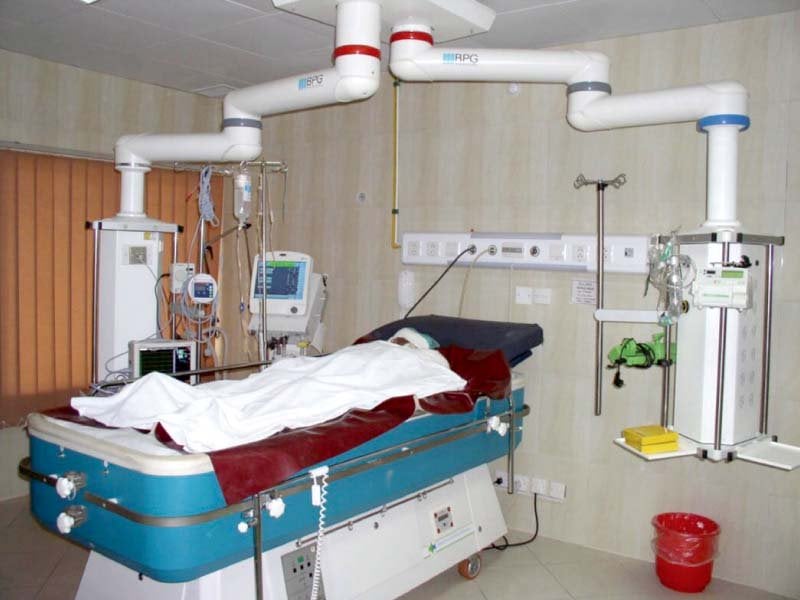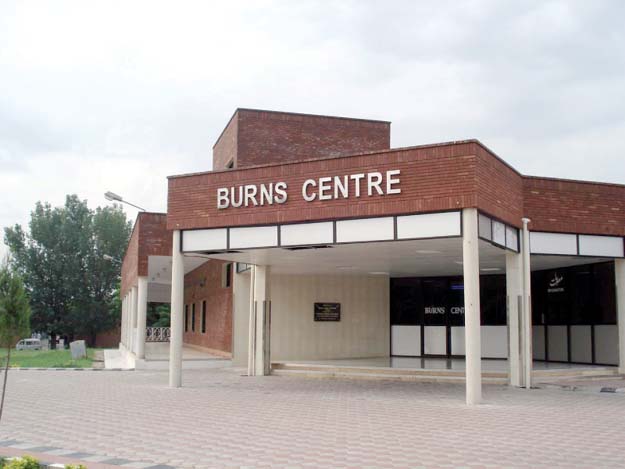
The Burns Centre (BC) at the Pakistan Institute of Medical Sciences (Pims), is a modern facility. Built in December 2007, under the tenure of former dictator General (retd) Pervez Musharraf, BC chief Professor Dr Tariq Iqbal says they have 35 beds and two modern operation theatres.
Since it was created, BC records show that as many as 66,944 patients have passed through it, including 51,118 males and 43,546 females.
Of these, some 8,330 patients who had suffered serious burns were admitted.
Sindh's largest hospital facing acute shortage of staff
Of these, 6,165 patients were discharged after receiving either minor, major or advanced burns dressings and treatment. However, the hospital also saw some 2,165 patients succumb to their wounds.
According to the documents available to Daily Express, around 70 per cent of cases reported were of children.
The documents further state that patients who had suffered more intense burns on greater parts of their body had a higher mortality rate with those who had burns over 30%-40% of their body having a four per cent mortality rate, those patients who had suffered 41%-50% burns on their bodies had a 10 per cent mortality rate, while it rose to 12 per cent for patients who suffered burns of 51%-60% on their bodies.

Despite the high mortality rate amongst the extreme cases, Dr Iqbal claimed that the BC had managed successfully treated one patient who had suffered 90 per cent burns on their body which was no less than a miracle
Despite the heavy load of patients, Dr Iqbal said that the centre was one of the few in South East Asia where patients were treated for free and provided with advanced burns dressings and synthetic skins.
“This dressing would cost anywhere between Rs50,000 to a million rupees at private facilities,” he said. With a patient load of 100 to 200 cases per day, and around 70,000 patients a year, Dr Iqbal said that it was far more difficult to run such a facility than to make it.
Elaborating his dilemma the BC chief said that the centre had started with 20 beds but was later expanded to 35 to accommodate the flow of indoor patients as well.
Despite that expansion, Dr Iqbal said that they felt that they were still short on space. In this regard, he said that they had sent a project concept-I (PC-I) to the planning commission for expansion of the BC three years ago. The project, though, has yet to be approved.
To make matters worse, he said that they were woefully understaffed, with just 80 staff and 20 doctors out of the total sanctioned strength of 200.
The head nurse of BCsaid that a bulk of their patient load comes from outside of Islamabad Capital Territory (ICT), including from Rawalpindi, Murree, Kashmir and Khyber-Pakhtunkhwa. Moreover, since they provide full-fledged outpatient department (OPD) services, the patient flow there is more than at other departments.
Awareness
One way to reduce their patient load, Dr Iqbal says, is to lower referrals by getting people to adopt more precautionary steps.
“Most of the patients who were brought to the centre either suffered burns due to an exploding gas cylinder or electrical short circuits,” Dr Iqbal said.
He was supported by his head nurse who added that they also get a large number of patients who have suffered burns due to exploding compressed natural gas (CNG) and liquefied petroleum gas (LPG) or liquefied natural gas (LNG) cylinders in vehicles.
President stresses importance of quality healthcare, education
Dr Iqbal emphasised on creating awareness amongst the public about the hazards that cylinders and short circuits pose.
Post-graduate teaching programme
Apart from tending to patients, the centre has started the country’s first-ever post-graduate teaching programme for doctors.
Of the six trainee surgeons at the centre, one of them was a Yemeni national.
Dr Iqbal said that when the batch graduates, the Yemeni will become the first qualified burn surgeon of his country.
Published in The Express Tribune, February 6th, 2019.












1736508423-0/Express-Tribune---News-Desk-(9)1736508423-0-270x192.webp)










COMMENTS
Comments are moderated and generally will be posted if they are on-topic and not abusive.
For more information, please see our Comments FAQ